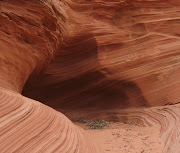 Indonesian officials are evacuating thousands of reluctant angry people at gunpoint out of harm's way of a Mount Kelud volcanic eruption. Villagers and
Indonesian officials are evacuating thousands of reluctant angry people at gunpoint out of harm's way of a Mount Kelud volcanic eruption. Villagers and people living on farms on the slopes do not want to leave their livelihoods, crops and livestock behind, believing the mountain will not blow. At least 13,000 are refusing to leave the mountain with some of the survivors having experienced the 1990 eruption staying put. Over 100,000 people live in the immediate danger zone. Refugee camps are tense with frustrated people wanting to leave to check on property and loved ones after being forced by the police to go there. Volcanologists state there is no way to tell with absolute certainty that it will blow, but all signs, sulfur, ground tilt, continuous plumes of gas are present.
people living on farms on the slopes do not want to leave their livelihoods, crops and livestock behind, believing the mountain will not blow. At least 13,000 are refusing to leave the mountain with some of the survivors having experienced the 1990 eruption staying put. Over 100,000 people live in the immediate danger zone. Refugee camps are tense with frustrated people wanting to leave to check on property and loved ones after being forced by the police to go there. Volcanologists state there is no way to tell with absolute certainty that it will blow, but all signs, sulfur, ground tilt, continuous plumes of gas are present."I am afraid of the mountain erupting but so far there have been no signs - the trees near the crater are still green, animals such as monkeys, snakes and hogs haven't come down."
 Volcanoes craters plump up in stages like a souffle, with a bubble of magma and gases getting bigger and then deflate to grow bigger the next time. This cooking magma stage has already passed in Java Indonesia. The lake at the crater has turned from a beautiful blue to white from vast amounts of sulfur. Heated water and an explosion could bring horrific mudslides as well. Indonesia is already part of the notorious volcanic and fault-ridden Ring of Fire with earthquakes heralding the arrival of a volcanic blast. On television, volcanic ash looks like giant flakes of snow, but if one breathes in too much of it, it will solidify in a person's lungs. The air fills with poisonous gas, asphyxiating people before the crater blows to release the molten magma burning at temperature high enough to melt steel. (BBC Photo)
Volcanoes craters plump up in stages like a souffle, with a bubble of magma and gases getting bigger and then deflate to grow bigger the next time. This cooking magma stage has already passed in Java Indonesia. The lake at the crater has turned from a beautiful blue to white from vast amounts of sulfur. Heated water and an explosion could bring horrific mudslides as well. Indonesia is already part of the notorious volcanic and fault-ridden Ring of Fire with earthquakes heralding the arrival of a volcanic blast. On television, volcanic ash looks like giant flakes of snow, but if one breathes in too much of it, it will solidify in a person's lungs. The air fills with poisonous gas, asphyxiating people before the crater blows to release the molten magma burning at temperature high enough to melt steel. (BBC Photo)
Indonesia's top volcano expert, Surono, who goes by only one name, says people living within six miles of the mountain should leave. The government's motto is "safe life," he said.
While Surono would not say what he believes the chances are for an eruption, he did report that there has been "decreased volcanic earthquake activity since yesterday, but the temperature of the water in the volcano has increased to 38 degrees Celsius, which is only a slight increase, but still high." (AFP Photo)
Tempers and temperatures are running hot. Many are just walking out of the camps willing to take the risks. There are complaints of food shortages in the camps. This could turn into a long term nightmare with people penned in without any sure way of knowing for how long. The tension is getting to everyone with the UN looking at a disaster relief nightmare in urban areas and the camps should the volcano erupt. (AFP Photo)

Volcanoes: Crucibles of Change is illustrated fun and knowledge-filled in hefty paperback form from professional volcanologists; Richard V. Fisher, Grant Heinken and Jeffrey Hulen. The pictures are spectacular.











No comments:
Post a Comment